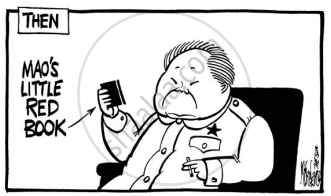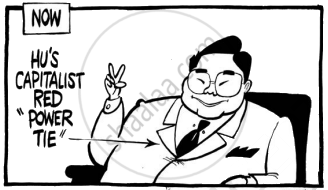Advertisements
Advertisements
प्रश्न
Evaluate any three steps taken by the Chinese leadership for the growth of Chinese economy.
उत्तर
The following are the steps taken by Chinese leadership for the growth of the Chinese economy:
- Four Modernisations Steps by Zhou Enlai: The Chinese leadership took significant policy decisions in the 1970s. China ended its political and economic isolation by establishing relations with the United States in 1972. In 1973, Premier Zhou Enlai proposed the following ‘four modernisations’ - Agriculture, industry, science and technology and military.
- Open Door Policy: By 1978, China's then-leader Deng Xiaoping had declared the "open door" policy and economic reforms. The policy goal was to increase productivity through foreign capital and technology investments. After 1978, China took its path toward establishing a market economy.
- Reforms during the 1980s: The Chinese avoided'shock therapy,' instead gradually opening their economy. Privatization of agriculture began in 1982 and was followed by privatization of industry in 1998. Trade barriers were removed only in Special Economic Zones (SEZs) where foreign investors might set up businesses. In China, the state has played and continues to play an essential role in establishing a market economy. The new economic policies aided China's economy in breaking out of its slump.
APPEARS IN
संबंधित प्रश्न
Trace the evolution process of the European Union.
What does the logo on the ASEAN flag symbolize?
Assess the role of ASEAN as an economic association.
Analyse any three factors responsible for the European Union to be a highly influential regional organisation.
What were the objectives behind the formation of the ASEAN in 1967?
Which of the following nations adopted an ‘open door’ policy?
When was the People’s Republic of China established?
Who proposed the ‘four modernizations’ in China?
When did China becomes a member of the WTO?
Who among the following adopted an ‘open door’ policy?
Which of the following is the only country that suffered the destruction caused by nuclear bombs?
Who among the following adopted an open-door policy?
Who among the following adopted the ‘Open door’ policy?
Which among the following was the first non-communist country to establish an embassy in China?
Which of the following is the observer country of SAARC?
In which year, China ended its political and economic isolation with USA?
Which of the following was not an impact of New Economic Policy of China?
The present Chinese economy differs from its command economy. Which of the following point is true regarding this.
In which year, China ended its political and economic isolation with USA?
Which of the following was not an impact of New Economic Policy of China?
Why did the people of China not receive the benefits of the reforms when its economy had improved dramatically? Explain giving any two reasons.
Explain any two major policy decisions made by the Chinese government to open and develop its economy.
Study the given cartoon carefully and answer the questions that follow:
 |
 |
- To which country are these two cartoons related?
- Japan
- Vietnam
- South Korea
- China
- Red Book is related to which ideology?
- Capitalism
- Communism
- Humanism
- Terrorism
- What does the 'Red Power Tie' depict?
- Negation of communism
- Acceptance of Capitalism
- Coordination of communism with Capitalism
- Negation of Capitalism
- What is the difference between 'then' and 'now' as per the cartoon?
- 'Rigidity' has increased now in the ideology of 'then'.
- Rigidity has decreased 'now' in the ideology of 'then'.
- The leader under 'then' and the leader under 'now' belong to different political parties.
- The leader under 'then' and the leader under 'now' belong to different organisations.
